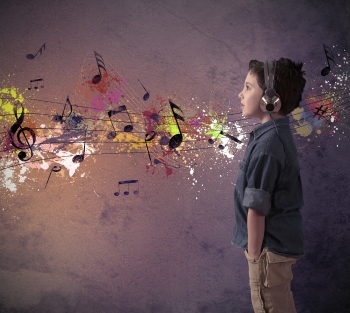
Creating Emotional Awareness Through Music
Sometimes it can be difficult to be in touch with your own emotions. This can be a frustrating experience that may lead you to feeling disconnected from yourself and those around you. This sort of disconnection can contribute to depression, anxiety, anger, social isolation, and other mental health issues. This is because humans are social beings who use emotional cues to relate to one another and build community and connection. Developing emotional awareness is a vital starting point to empathy, compassion, and connectedness with others - and it also helps you to better understand yourself. If you are having trouble identifying emotions, there are exercises that can help. This exercise uses music to help you tune into and name your own emotions so that you can build the emotional awareness to foster social connection in the future.
The only things you’ll need for this exercise are a way to play music and, optionally, something to take notes if you wish.
First, pick a song with lyrics. Starting with a song with lyrics will allow you to use the singer’s words to pick up on the emotions that they are trying to convey. It can be helpful to choose a song you’re not very familiar with so that you do not have any preconceived notions about what it means.
After picking the song, answer the questions below. You can use many clues to answer these questions: the lyrics, the singer’s tone of voice, the melody, the feel of the music, the tempo, any background sounds or effects, etc. There are no right or wrong answers; the important part of the exercise is for you to examine how you came up with your answers and what it is about the song that clued you in about them. Doing this will help you notice the context clues that you use in identifying emotions you experience in everyday life in order to build emotional awareness. It may be helpful to look at a feeling wheel, such as the one included below, while you are completing this activity to get an idea of the wide range of emotions that exist and how to label them. You can choose emotions directly from the wheel, as simple or as complex as you like, or you are welcome to use others that are not listed if they feel more accurate.
Play the song, listen closely, and ask yourself these questions:
1. What is the message of the song?
- What is the singer trying to say?
- How did you figure that out?
2. What feelings might the singer be having?
- How did you figure that out?
- What clues alerted you to these feelings?
- Did they explicitly say they were “happy,” “sad,” “disgusted” etc. or did you infer it from other contexts such as the images created by the lyrics?
3. What thoughts came up for you during the song?
- What about the song led you to think those things?
4. What feelings did you have during the song?
- What about it made you feel that way?
- What told you that you were experiencing a specific emotion (i.e. how did you know you felt sadness as opposed to anger)?
- Did you have any physical sensations that clued you in?
5. Are your feelings the same as those of the singer?
- Why or why not?
This exercise is a way to “work out the muscles” that our brain uses to engage in things like empathy, compassion, and noticing our own emotional states. The more you do it, the better you will be at identifying emotions, and the better your emotional awareness will be.
Once you have done this with a few songs and practiced identifying emotions, you can create a “cheat sheet” of which songs you associate with specific feelings. Then, in the future, if you are having trouble differentiating between emotions, you can pull out the cheat sheet. Ask yourself, “Which of these songs better captures what I’m feeling? If my life were a movie, which one would fit best in the background right now?” By picking which song fits best, you will then have a better idea of exactly which feeling you are experiencing, which will lead to increased emotional awareness.
For an advanced version, try using a track with no lyrics: something instrumental, classical, or a movie score. Ask yourself the same questions, but with slight modifications:
1. What is the message of the song?
- What might the composer or artist be trying to say?
- How did you figure that out?
2. What feelings might the composer or artist be trying to convey?
- How did you figure that out?
- What clues in the music alerted you to these feelings?
3. What thoughts came up for you during the song?
- What about the song led you to think those things?
4. What feelings did you have during the song?
- What about the music made you feel that way?
- What told you that you were experiencing a specific emotion?
- Did you have any physical sensations that clued you in?
This version is harder because you have to discern what the composer wants you to feel without the aid of lyrics. It may seem difficult at first, but you will likely notice that you can still get a sense of emotion in the song, and may even begin to feel it yourself. Or it may lead you to feel something different altogether, and that’s okay. Simply giving a name to the feelings you are having will help you to develop more emotional awareness.
If you think you may need help with identifying emotions or building emotional awareness, call the Center for Growth at (215) 922-5683 or visit https://www.therapyinphiladelphia.com/contact/ to set up an appointment with a therapist who can develop a plan to meet your needs.


















